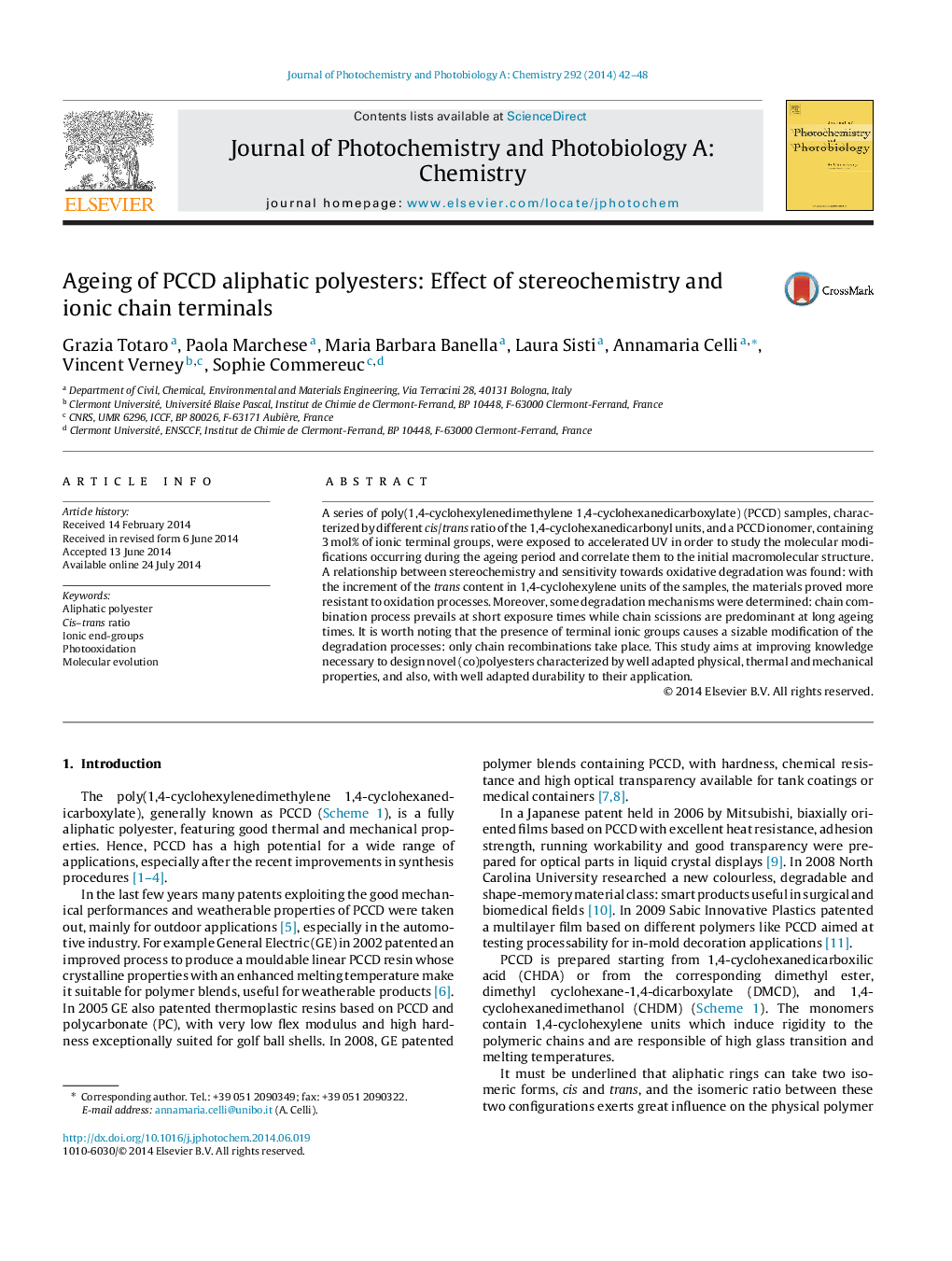| Article ID | Journal | Published Year | Pages | File Type |
|---|---|---|---|---|
| 26862 | Journal of Photochemistry and Photobiology A: Chemistry | 2014 | 7 Pages |
•The durability of PCCD films has been analyzed as function of stereochemistry.•Rheology identifies two degradation mechanisms: chain scission and recombination.•The addition of ionic end groups induces only chain recombination.
A series of poly(1,4-cyclohexylenedimethylene 1,4-cyclohexanedicarboxylate) (PCCD) samples, characterized by different cis/trans ratio of the 1,4-cyclohexanedicarbonyl units, and a PCCD ionomer, containing 3 mol% of ionic terminal groups, were exposed to accelerated UV in order to study the molecular modifications occurring during the ageing period and correlate them to the initial macromolecular structure. A relationship between stereochemistry and sensitivity towards oxidative degradation was found: with the increment of the trans content in 1,4-cyclohexylene units of the samples, the materials proved more resistant to oxidation processes. Moreover, some degradation mechanisms were determined: chain combination process prevails at short exposure times while chain scissions are predominant at long ageing times. It is worth noting that the presence of terminal ionic groups causes a sizable modification of the degradation processes: only chain recombinations take place. This study aims at improving knowledge necessary to design novel (co)polyesters characterized by well adapted physical, thermal and mechanical properties, and also, with well adapted durability to their application.
Graphical abstractFigure optionsDownload full-size imageDownload as PowerPoint slide
